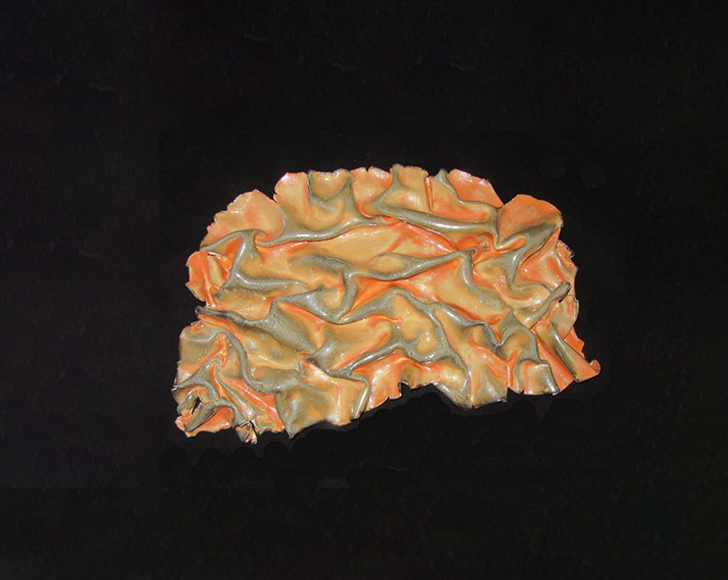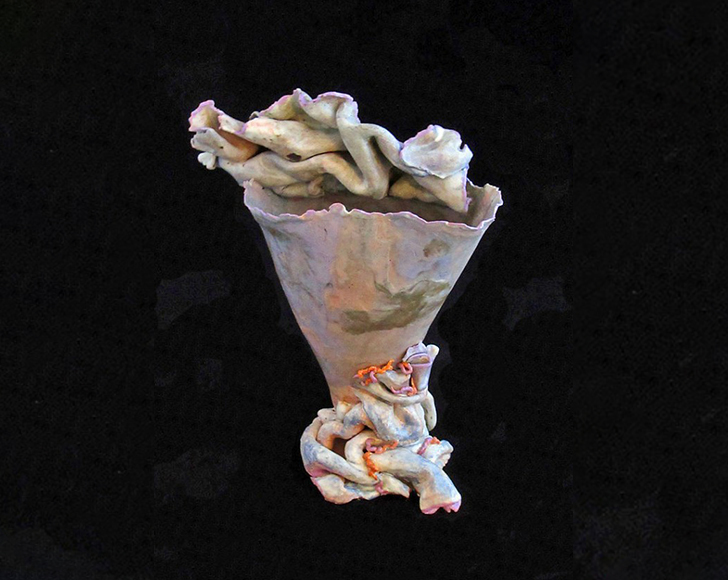
The focus of my recent work began with a new porcelain form, a shape of the clay into ribbon folds or pleats, similar to a bolt of white fabric unfurled, gathered in casual folds, and placed on a flat surface. These became the white ribbon vases included in this section. Taking the idea further, I began to make this shape using tinted porcelain made with oxide powders of various colors mixed in the porcelain in its “soupy” stage. When dry enough to manipulate, the clay was rolled out into small slabs of different colors. They were then stacked on top of each other, cut and restacked, and then rolled out to achieve a mosaic swirl of color. This finished slab was then used to either construct an entire piece or used as trim juxtaposed to a different textured or flat surface, as shown in other pieces here. So why folds? It was a challenge that transformed into a practiced skill of making the clay folds comprising a vessel appear spontaneous – like a frozen moment of captured air within the swells of fabric, just before the billowed air seeps out, and the fold deflates…. Not unlike the ephemeral nature of life itself.




















